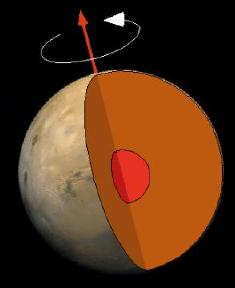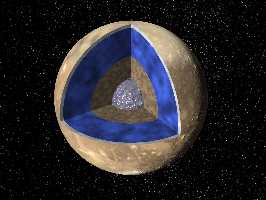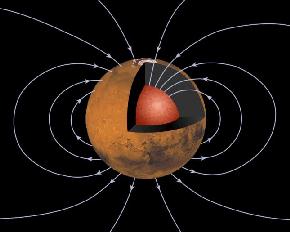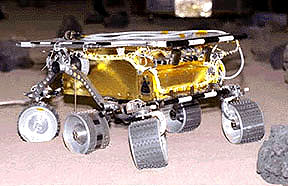Click on image for full size
Image from: NASA/JPL
The Interior of Mars, from Mars Pathfinder
Many missions have returned data on the shape of Mars, a measurement which contributes to an understanding of a planet's interior structure. These data first showed that Mars had a huge bulge, now called the Tharsis Ridge. Mars Pathfinder took better data on the shape of Mars by passing over the Martian poles instead of the around the middle.
These data suggest that Mars has a large, and solid core, as shown in the figure to the left. (The figure is a rough drawing and is not meant to show the detailed shape of the core). These findings help address questions which remain about Mars, and contribute to the overall results returned by the Mars Pathfinder mission.
Scientists used to think that because the Martian surface contained so much iron, and the Martian magnetic field was weak, that the early history of Mars was not sufficiently warm for Mars to differentiate, and form a large solid iron core, such as that of the Earth. A large molten iron core would generate a strong magnetic field. Thus, iron must have stayed mostly on the outside layers of Mars, making the surface red with rust.
Recently, Mars Global Surveyor returned the first definitive measurement of a Martian magnetic field. Therefore, if the core of Mars is large and composed of iron as the Mars Pathfinder measurement shows, then this theory about the evolution of Mars may not be completely correct.














